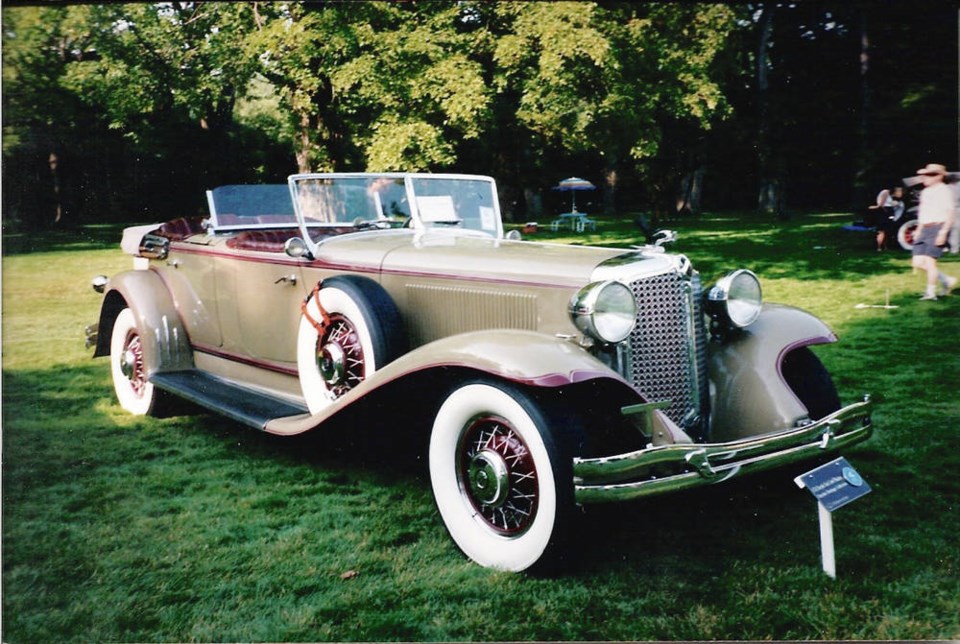Chrysler has had its ups and downs over the years and in 2014 landed in the arms of Italy’s Fiat, becoming Fiat Chrysler. With the recent addition of the French PSA Group It is now named Stellantis.
It was an unexpected evolution for the grand old company that rose out of Maxwell Motor Co. to become Chrysler Corp. in 1925. It came of age in the late 1920s and early thirties and if one car could epitomize that maturing it would be the 1931 Chrysler Imperial.
Chrysler Corp. was the ambitious vision of Walter P. Chrysler, a railroad master mechanic who joined General Motors’ Buick Division and rose to become Buick’s president. When he became dissatisfied with GM founder Billy Durant’s loose management style, Chrysler left Buick in 1919. He was soon hired to reorganize the shaky Willys-Overland Co. of Toledo, Ohio.
After rescuing Willys, the hard driving Chrysler was contracted to perform the same feat at Detroit-based Maxwell Motor Corp. and its associated company Chalmers. By this time Chrysler was interested in more than just another rescue; he wanted his own car company.
As president of Maxwell, Chrysler introduced a car bearing his name in 1924, the Chrysler 70 (70 mph top speed). It began Chrysler’s reputation for quality engineering with such features as four-wheel hydraulic brakes, full pressure lubrication, aluminum pistons, and air and oil filters.
Another big advance was its higher compression engine. Based on theories of pioneering English combustion engineer Harry Ricardo and others, Chrysler engineers developed an engine with a 4.7:1 compression ratio when the industry norm was around 4.0:1. The Chrysler 3.3 litre (201 cu in.) side-valve six developed a robust 68 horsepower. Compression would rise to 6.0:1 by 1928.
High compression gave the 1924 Chrysler a comfortable 70 to 75 mph (113 to 121 km/h) top speed and fuel economy of 20 mpg. It was introduced to much acclaim in New York City’s Commodore Hotel in January, 1924, and by year’s end 32,000 had been sold. This set the stage for Maxwell to become the Chrysler Corp. in 1925.
Under Walter Chrysler’s management, Chrysler Corp. expanded. It moved the Chrysler nameplate upscale, and in a blockbuster 1928 introduced two new cars, the popular priced Plymouth and mid-priced De Soto, and bought Dodge Brothers, builders of trucks and sound mid-market cars. Chrysler was soon in third place in the industry.
The stage was set for Chrysler to show the world it had arrived and could build a car that would take its full place beside other manufacturers’ luxury models. This was the 1931 Chrysler Imperial.
For 1931, Chrysler produced its first eight cylinder engines, the Imperial’s being the mightiest. The big 6.3 litre (385 cu in.), side-valve, inline eight developed 125 horsepower and had Chrysler’s highly regarded “Floating Power” engine mounts. A sturdy nine-main-bearing crankshaft was robust enough for marine use where it was the mainstay of Chrysler’s Marine Division for 20 years.
It drove through a newly introduced four-speed transmission and vacuum-operated clutch, which disengaged when the accelerator was released. It could be cancelled by a dash-mounted switch, which most drivers did. The hydraulic brakes were power assisted.
While it was mechanically impressive, the 1931 Imperial’s appearance was even more so. Recognizing the growing importance of styling as formalized by Cadillac’s 1927 LaSalle, stylists were involved from the beginning in the development of the ‘31 Chrysler.
The result was stunning. Unabashedly taking a cue from the 1929 front-wheel drive L-29 Cord they took advantage of the Imperial’s 3,683 mm (145 in.) wheelbase and stretched the louvered hood until it looked longer than a Duesenberg’s. The vertical-bar, vee-shaped grille was canted back at a stylish angle.
Gracefully flowing front fenders carried side-mounted spare tires, and the slant of the two-piece windshield echoed the angle of the grille. A huge, stand-alone trunk dominated the rear.
The ‘31 Chrysler Imperial had good performance as well as graceful lines, and Indianapolis race driver Harry Hartz recorded many stock car records in one on the sands of Daytona Beach, Florida.
Car Life (5/61) conducted a simulated road test and estimated that the 2,155 kg (4,750 lb) Imperial could accelerate to 60 mph (97 km/h) in 20 seconds, and approach 100 mph (161 km/h).
Their estimated speeds in the intermediate gears were 31 mph (50 km/h) in 1st, 44 (71 km/h) in 2nd, and 73 (117) in 3rd, making it an excellent passing gear. First gear was almost redundant with an engine producing an estimated 290 lb-ft of torque at 1,400 rpm; It was recommended for emergency use only.
It is unfortunate that the mighty Imperial arrived in the midst of the Depression. All manufacturers suffered, but Imperial sales of just over 3,200 was at least respectable for Chrysler’s coming-of-age car.



